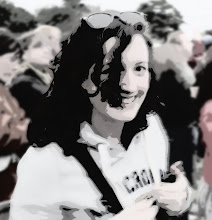I'm finally getting around to posting up about three papers I have read on context awareness in tourism guides. These guides are typically aware of their location and give a the user a tour, such as an audio tour, in this way it is in the same category as AR tours.
'Context-awareness in Mobile Tourist Information Systems: Challenges for User interaction' by Hinze and Buchanan discusses the challenges in context handling in mobile tourist information systems, and how to model, observe, evaluate and exploit this application area.
Development of a personal profile which knows travel history, means of travel, interests, location and current time. Information based on these contexts in the personal profile should be delivered to the user. Recommendations could be given based on the profile and user feedback.
Navigation should be supported on maps and location should be indicated on maps.
Tourism Context Challenges:
1. Concepts of Context
Characteristics of mobile device - storage and screen size
Network - bandwidth and peers
Application - requirements in storage, download capabilities and display capabilities
User - time, location, interests
Information Objects - location
The designers believe that the concept of context should be open and extensible to address different platforms and environments.
2. Context Management
The context should be considered through 4 tasks.
Model: Information should be available on objects that are of interest to the user based on their personal background, while keeping in mind time, location and direction which is continuously changing.
Observer: The context data of the user can be stored for future use.
Store: Data can be stored on the device as well as the server. Security issues will have to be addressed regarding personal information.
Access: Information has to be kept private, and the system has to be efficient.
3. Context Usage
The information should be presented in an effective way, with a good design of the interface. The system should be satisfactory to use, and the user should not be weakened by the transfer of data between the data and server.
'Context Awareness in Mobile Tourism Guides' by Schwinger et al. evaluates several context based tour devices and discusses the possibilities for ubiquitous computing (time and location awareness with possibility for personalised services), in the tourist industry this could be used for the personalised tourism information on points of interest.
Interesting Points
They found that most devices had poor CPU power was a limitation, and that memory in some devices could be reserved by having push based access. They found that social factors are important in tourism, especially with groups. Functionality should be high and text messaging could be a good feature for the devices.
'Cyberguide: A Mobile Context Aware Tour Guide' by Abowd et al. discusses Cyberguide, a project where they built a series of prototypes of a mobile context aware tour that knew the users current location and history of past locations. The long term goal of the project was to develop a device that would know where the tourist is, what he/she is looking at and predict and answer questions about the environment around them.
This paper is from 1997, the technology used is dated and many of the 'possible future' prospects have been developed since. The paper has many relevant points to Augmented Reality tour systems.
Device
A handheld device is seen as acceptable in this paper as a most tourists are happy to carry around a book for information. The ideal handheld device for the developers in this paper has:
- Screen and pen/finger interface
- Storage resources
- Access to input/output interface
- Video input/output
Design Process
The designers also used an iterative design process when developing the prototypes for this system, and got feedback through formal questionnaires, informal surveys, and informal user comments.
Interesting Points
The ideal personal guide would allow the tourist to see any exhibit in any order. The guide would locate the tourist through a navigation system (indoor beacons, GPS etc.) and objects marked with visual markers.
Real time communication could act as an agent, giving people the ability to book or make reservations from the device.
Enhance reality - give X-Ray vision (This could be in line with an Augmented Reality system)
The designers hoped to increase communication, improve the context awareness and have a modifiable information base.

0 comments:
Post a Comment